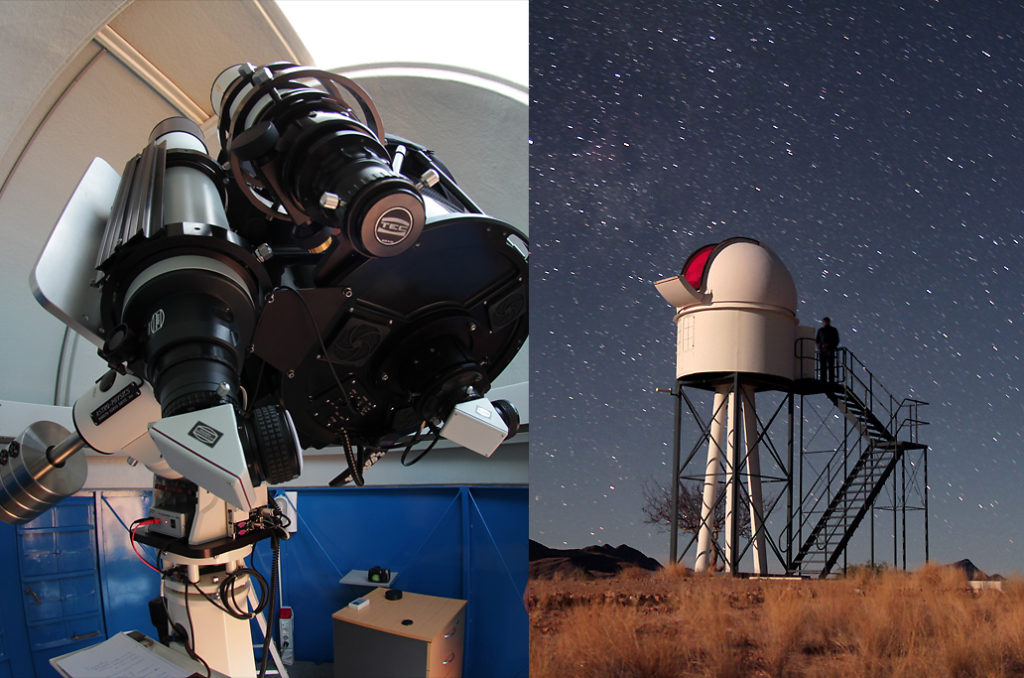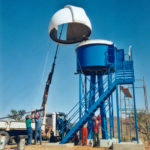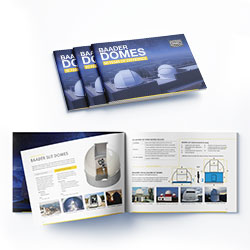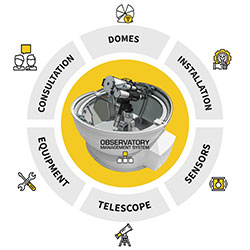The 3.2 m "Classic Dome" of Rooisand Observatory stands on the Rooisand guest farm in the Khomas Highlands directly below Gamsberg in Namibia. The lodge is about 150 km (as the crow flies) from Windhoek—halfway between Windhoek and Walvis Bay on the Atlantic coast, directly on the C26.
The dome and instruments are positioned about 8 meters above ground on a tower to lift the telescope above the near-ground air layers heated by strong solar radiation. This significantly improves seeing and observing conditions.
Rooisand Observatory was established in autumn 2004 and is used mainly for public stargazing for guests of the lodge, but it can also be rented by experienced amateur astronomers for their own observations.
Until 2013, the dome housed an Astro-Physics GTO 1200 on a heavy Baader steel pier. Installed were a
- Zeiss 150 mm APQ refractor with 1200 mm focal length, Kohmas, Namibia
- a Zeiss AS 80 mm refractor with 840 mm focal length, and
- a Celestron C14 that was selected for optical imaging quality.
Some images of the dome and telescope installation (PDF)
Experiences with observatory domes from Baader Planetarium and other suppliers
This post was published on 7 August 2019
For many years, Baader has occasionally asked me to put my experiences with observatory domes—those I encountered over my life as an active observer and observatory user—down on paper. I finally wanted to honor this request and have summarized my experiences here in brief.
This instrument combination was sold to another guest lodge in 2012 and replaced with modern equipment. It consists of an Astro-Physics GTP 1600 mount on a heavy Baader steel pier. Installed on it are a
- 17″ PlaneWave astrograph and, in parallel, a
- 130 mm Zeiss APQ with 1,000 mm focal length, and a
- TEC 110 FL APO, f/5.6
Remote Telescope for Rooisand
 In May 2024, Franz Hofmann from the Chamäleon team installed a new remote telescope—a turnkey Baader Planetarium solution consisting of a 10 Micron GM2000 mount on a Baader steel pier and a PlaneWave CDK 14″ astrograph including control computer. After just under a week the installation was completed; the first “first‑light” images were captured in June—remotely controlled from Germany.
In May 2024, Franz Hofmann from the Chamäleon team installed a new remote telescope—a turnkey Baader Planetarium solution consisting of a 10 Micron GM2000 mount on a Baader steel pier and a PlaneWave CDK 14″ astrograph including control computer. After just under a week the installation was completed; the first “first‑light” images were captured in June—remotely controlled from Germany.
On 29 May 2025 the CDK made it to APOD:
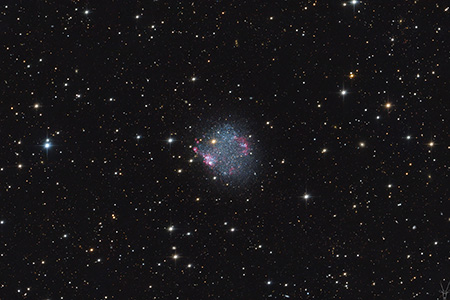
Further information can be found here: www.rooisand.com
Trivia
Two years after completion of the Rooisand observatory, the Baader dome received truly exceptional visitors: more than 35 San people aged between about one and 75 years.
The San are probably descendants of Namibia’s indigenous peoples. Only a few remain, living in small villages in northern Namibia that they normally never leave.
In September, Carsten Möhle—a well-known tour operator in Windhoek (www.bwana.de)—traveled across Namibia with an entire village to show the San their homeland. Since many of the San’s tales, legends and myths contain numerous references to the starry sky and constellations, they were shown the observatory dome and telescope, and the facility was explained to them.
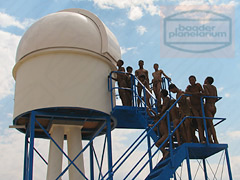 |
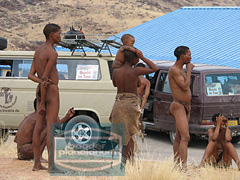 |
 |
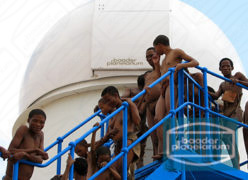 |
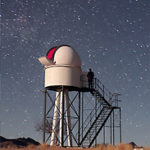 |
 |
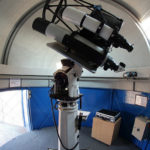 |
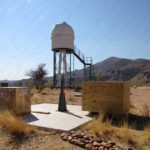 |
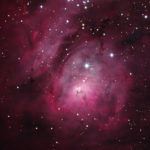 |
